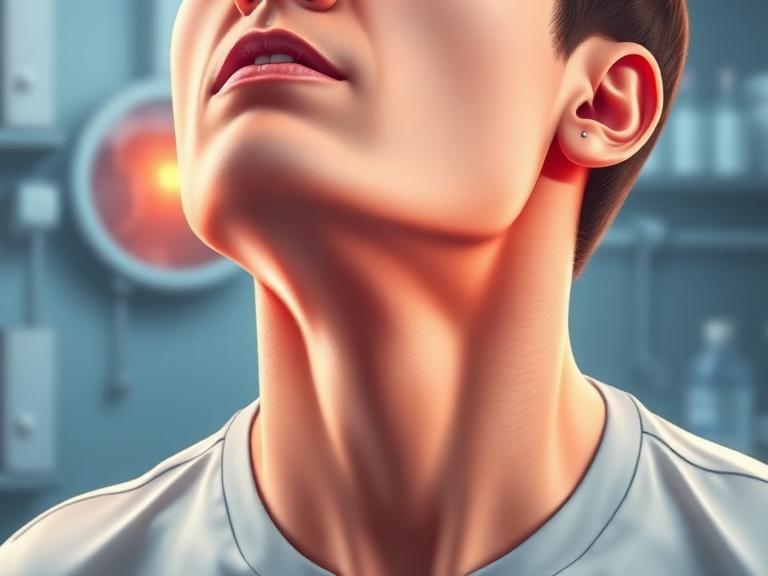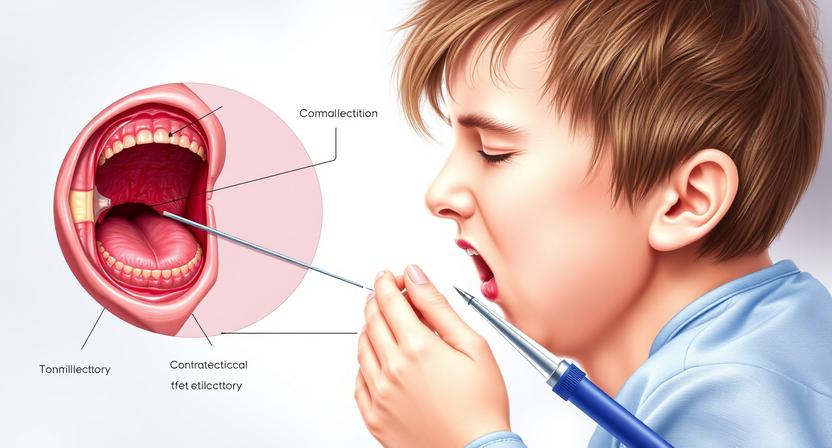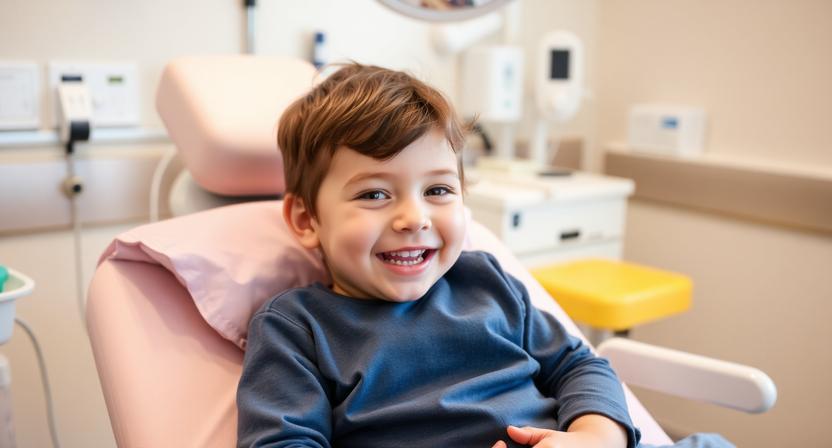Grisel’s Syndrome: Causes, Risk Factors & Inflammation Pathway
By ENT Specialist – Dr. Sagar Rajkuwar, Nashik, Maharashtra, India
Clinic Website: www.entspecialistinnashik.com
Table of contents-
1)Introduction
2)What is Grisel’s syndrome?
3)Primary Factors Contributing to Grisel’s Syndrome
4)Conclusion


1)Introduction
A rare but significant illness, Griselle syndrome is defined by non-traumatic atlantoaxial subluxation, which is the partial displacement of the first (atlas) and second (axis) cervical vertebrae in the neck. Children are most frequently affected, usually after ear, nose, or throat (ENT) infections or surgery in the area.
Although rare, knowing the underlying reasons for Grisel’s syndrome is essential for prompt diagnosis and treatment, as delayed identification can result in consequences like neurological problems or persistent neck abnormalities.
The underlying causes, predisposing variables, and processes that contribute to this rare neck condition after infection are discussed in detail in this article.
2)What is Grisel’s syndrome?
It is necessary to first comprehend the condition’s nature before delving into its possible causes.
A nontraumatic inflammatory subluxation of the atlantoaxial joint (C1–C2) is known as Grisel’s syndrome. This dislocation, in contrast to those brought about by injury or accident, usually results from inflammatory transmission from nearby infections or procedures in the head and neck area, and it occurs spontaneously.
Pierre Grisel originally identified the disorder in 1930, connecting nasopharyngeal infections to torticollis, a twisted neck position.
3)Primary Factors Contributing to Grisel’s Syndrome
There are two main categories of causes for Grisel’s syndrome:
Infectious reasons – because inflammation spreads from infections in the ENT region.
Post-surgical factors – following head or neck procedures that include manipulation or inflammation near the cervical spine.
Let’s go through them in depth.
DISCLAIMER-Some patients go to net and directly take treatment from there which can lead to catastrophic consequences-Then- Many people ask then why to read all this text -the reason is that it helps you to understand the pathology better ,you can cooperate with treatment better ,your treating physician is already busy with his patients and he does not have sufficient time to explain you all the things right from ABCD ,so it is always better to have some knowledge of the disease /disorder you are suffering from.
1. Viral Origins
A. Infections of the Upper Respiratory System
Upper respiratory tract infection (URTI) is one of the most frequent causes of Grisel’s syndrome.
Examples include:
- throat infection (pharyngitis)
- Tonsillitis
- Adenoiditis
- middle ear infection (otitis media)
- Sinus infection
may all result in inflammation that spreads to the atlantoaxial joint via lymphatic channels and surrounding veins.
The pharyngovertebral veins, which link the cervical spine to the pharyngeal area, act as a route for infection to spread to the transverse and alar ligaments of the neck. This inflammatory process causes the ligaments to become weaker, resulting in aberrant motion between the first and second vertebrae.
B. Infections of the Nasopharynx
- Additionally, infections in the nasopharynx (the region behind the nose and above the throat) have been associated with Grisel’s syndrome.
- Inflammation that tracks toward the cervical vertebrae can be caused by bacterial infections such as streptococcal pharyngitis, staphylococcal infections, or even tuberculosis of the nasopharynx**.
- Children, particularly those suffering from chronic adenoiditis, are more susceptible since their lymphatic drainage is more active and connected to cervical venous networks.
C.Otological Infections
- Mastoiditis and ear infections (otitis media) can occasionally play a role as well.
- The temporal bone and mastoid air cells, which are located anatomically near the upper cervical spine, are the sites of these infections. The infection may spread to the atlanto-occipital membrane, causing instability by weakening the transverse ligament.
D. Systemic Infections
- In unusual cases, systemic illnesses like rheumatic fever, scarlet fever, or tuberculosis can lead to ligamentous laxity, which may exacerbate Grisel’s syndrome.
- In these illnesses, the cervical ligaments are made more susceptible to secondary infection and loosening due to systemic inflammation and the release of toxins.
2. Post-Operative Reasons
Even if there is no active infection, Griselle’s syndrome can still develop after surgery on the head, neck, or ear, nose, and throat. Post-surgical Grisel’s syndrome, which is often caused by inflammatory or mechanical causes, is what this is called.
A. Tonsillectomy and Adenoidectomy
- The most frequently linked operations are adenoidectomy (removal of adenoids) and tonsillectomy (removal of tonsils).
- Inflammation around the atlantoaxial joint can result from inflammatory edema, local infection, or excessive neck manipulation during surgery.
- Children who have a secondary infection or post-operative pharyngitis are more vulnerable.
B. Mastoidectomy and operations on the ears
- Local inflammation and lymphatic spread toward the upper cervical ligaments can also be brought on by mastoid operations, notably canal wall down operations or tympanomastoidectomy.
- The risk is increased by hyperextension of the neck or inappropriate postoperative positioning during the procedure.
C. Procedures in the Nose or Sinus
- Procedures such as polypectomy, functional endoscopic sinus surgery (FESS), and septoplasty entail manipulation in regions near the nasopharynx. Through lymphatic and venous channels, the inflammatory response following these surgeries can extend to the cervical vertebrae.
D. Dental and Oral Operations
- Dental extractions, periodontal abscesses, or oral cavity infections can also cause the infection to spread to the neck area, which can result in Grisel’s syndrome, albeit less frequently.
3. Contributing Variables
After infections or operations, people are more prone to get Grisel’s syndrome if they have certain underlying diseases.
A. Ligament Laxity and Children’s Anatomy
In comparison to adults, children’s cervical ligaments are more flexible, their lymphoid tissue is larger, and their venous plexuses are more abundant, all of which facilitate the spread of infection. After inflammation develops, subluxation is more likely because their atlantoaxial joint capsule is looser.
B.Recurrent Infections of the ENT
Persistent or recurring illnesses of the adenoids, tonsils, or sinuses constantly expose the pharyngovertebral veins to inflammatory mediators. Over time, this repeated irritation weakens the cervical spine’s supporting structures.
C. Bad Posture and Neck Movement
Following ENT surgery, excessive neck flexion or extension can cause subluxation by stretching already weakened ligaments.
D. Immunocompromised Conditions
Patients with poor immunity have decreased healing ability as a result of poor nutrition, chronic disease, or prolonged illness. In these instances, the infection tends to spread more quickly, increasing the risk of developing Grisel’s syndrome.
4. Pathophysiology: How Infection Leads to Atlantoaxial Subluxation
A combination of ligamentous laxity and inflammatory spread is the precise process.
Step 1: Dissemination of Infection
The cervical vertebrae are infected by lymphatic channels and pharyngovertebral veins that carry infections from the nasopharynx or pharynx.
Step 2: Inflammatory Response
Edema and hyperaemia of the transverse ligament and atlantoaxial joint capsule are caused by the inflammatory exudate.
Step 3: Ligament weakening
Inflammation causes the ligaments that support the C1–C2 joint, namely the alar and transverse ligaments, to become weak and lax.
Step 4: Subluxation
The weakened ligaments cause the atlas to rotate or move abnormally over the axis, resulting in torticollis and atlantoaxial subluxation.
The non-traumatic nature of this mechanism distinguishes Grisel’s syndrome from other types of cervical spine dislocation.
5. The Functions of Inflammatory Mediators and Bacteria
Among the bacteria most frequently linked to Grisel’s syndrome are:
- Streptococcus pyogenes
- Staphylococcus aureus
- influenzae Haemophilus
- (Uncommon) Mycobacterium tuberculosis
By increasing vascular permeability and releasing enzymes and poisons that harm connective tissue, these creatures hasten the onset of ligament inflammation.
Additional inflammatory mediators, such as prostaglandins, cytokines, and interleukins, contribute to tissue breakdown and localized edema.
6. Contemporary Imaging Evidence and Insights
Doctors can now see early changes in the atlantoaxial joint thanks to developments in CT and MRI scanning, including:
- Inflammatory fluid buildup
- edema of soft tissue
- Ligamentous hypertrophy
- minor dislocation
Grissel’s syndrome is primarily inflammatory, not traumatic, as Grisel originally theorized, according to these results.
7. Preventative Actions
It is also helpful to know the reasons in order to avoid them:
- Quick treatment of ENT illnesses.
- Following adenoidectomy or tonsillectomy in at-risk youngsters, antibiotic prophylaxis.
- Refrain from overextending the neck during ear, nose, and throat procedures.
- Appropriate postoperative treatment to reduce inflammation and infection.
- In youngsters with neck pain or stiffness following surgery, early neck immobilization is essential.
For important health related topics please click on our facebook page link given below or copy paste this link into google search –
https://www.facebook.com/positivemind.healthcare
For important health related videos please click on the link of our youtube channel given below or copy paste this link into google search-
http://www.youtube.com/@healthuseful8539
4)Conclusion
The uncommon but potentially severe complication known as Grisel’s syndrome is mostly caused by the transmission of infection or inflammation from nearby head and neck areas to the cervical spine.
The underlying causes include ENT infections, post-operative inflammation, and predisposing variables such ligament laxity in youngsters. It’s crucial to identify these triggers early for prompt diagnosis and successful treatment.
ENT doctors can take preventative measures to lessen the risk and guarantee better surgical results by knowing the routes of infection and anatomical vulnerabilities.
If any patient has any ENT -Ear nose throat problems and requires any , consultation ,online consultation ,or surgery in clinic of ENT specialist Doctor Dr Sagar Rajkuwar ,he may TAKE APPOINTMENT BY CLICKING ON THE LINK GIVEN BELOW-
www.entspecialistinnashik.com
Clinic address of ENT SPECIALIST doctor Dr Sagar Rajkuwar-
Prabha ENT clinic, plot no 345,Saigram colony, opposite Indoline furniture Ambad link road ,Ambad ,1 km from Pathardi phata Nashik ,422010 ,Maharashtra, India-Dr Sagar Rajkuwar (MS-ENT), Cell no- 7387590194 , 9892596635






